Winters in Scotland are long, and the days are short and often dreary. Months stretch into seemingly endless semi-darkness, and it’s all too easy to slump into boredom. Dan Loveridge and his two friends, Jacques and Juan, have a way of avoiding the malaise: an annual Christmas Challenge. Two years ago, Dan won a fancy-dress challenge with a Bender Robot costume and a Bumblebee Transformer costume for two of his daughters, as well as an Oscar-the-Grouch costume for himself. Last winter, the challenge was to make something from small stirring sticks, and he won again with a fully articulated model excavator.
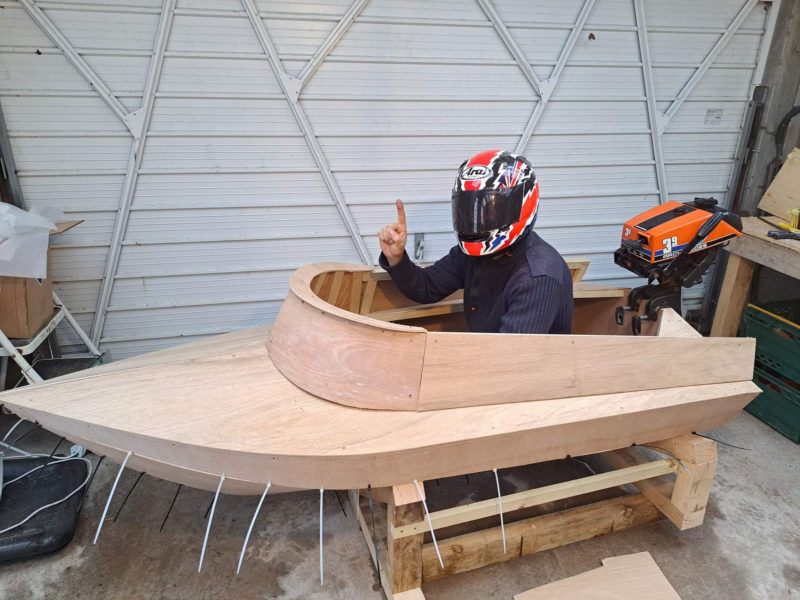 Marie Loveridge
Marie LoveridgeDan had a good feeling about SEA BESTIA’s potential to be dangerously fast and take first place in the big race.
In the fall of 2022, one of the three friends mentioned building a boat and holding a Christmas Day regatta. Dan liked the suggestion. Originally from New Zealand, he grew up on the Bay of Islands surrounded by boats and always on the water, but he had never built a boat. Discussions centered around keeping costs down when someone mentioned the article in Small Boats about Riley Hall’s AVANTI, a diminutive outboard powerboat built from one sheet of plywood. “AVANTI really set the wheels in motion,” Dan says, “and she became the go-to example during our debates on how to proceed.”
 Dan Loveridge
Dan LoveridgeAll of the pieces for SEA BESTIA’s deep-V hull were cut from a single sheet of 5mm plywood. The deck and cockpit required a second sheet.
Ultimately, the rules of the 2022 Christmas Challenge stipulated “one sheet of plywood, no more than £50 for an engine, and whatever else you could beg, steal, or borrow,” says Dan. “The rules were never set in concrete, and it led to heated and entertaining debate: basically, it was me seeing how far I could push the boundaries, and the other two altering the rules to stop me.
“At home,” Dan says, “I’d sit and doodle, and run calculations, and little by little I formed an idea.” He made a rough scale model and proved that he could get a beam of 1m and still have sides wide enough to provide good freeboard. Next came a computer-drawn scale model and then, although the design was “seat-of-the-pants stuff rather than carefully calculated,” Dan bought two sheets of 5mm non-marine-grade plywood.
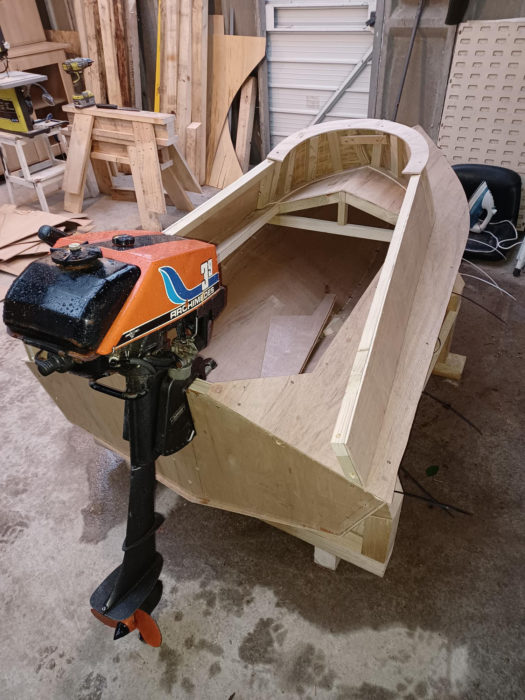 Dan Loveridge
Dan LoveridgePower is supplied by a 3.9-hp Archimedes, a 1970s-vintage outboard made by Volvo Penta in Sweden.
Dan would use one sheet for the hull and the other for the deck and coaming. “I was determined to have style at all costs,” he says, “I’d let the lawyers argue the case after the event.” After drawing his pattern on the plywood and cutting it out, Dan found that he had to trim the panels to get the two sides to meet at the bow. He also made some adjustments to the sheer. “At first it looked very much like a banana while I wanted it to look like a tiny scarab-style speedboat. It took a few more alterations to get it right.”
When Dan shipped out for work, he’d be away from the project two weeks at a time. And at home, when he didn’t have family commitments, the weather was not on his side. “The entire build took place in subfreezing temperatures in a breezy workshop that I had to throw up just to build the boat. I bought a secondhand woodstove to get the shop warm enough for the resin and paint to cure.”
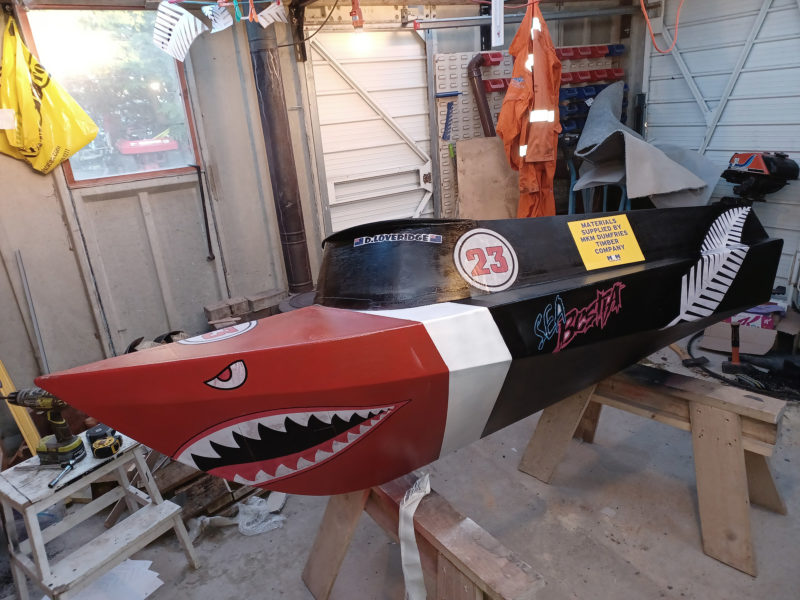 Dan Loveridge
Dan LoveridgeThe shark’s mouth, the number 23, and the name, SEA BESTIA, are all to honor Enea Bastianini, aka La Bestia (The Beast), Dan’s favorite Grand Prix motorcycle racer. The silver fern is a symbol of Dan’s New Zealand homeland.
Once the hull and deck were assembled and the plywood sealed with epoxy, Dan was eager to see how the boat floated. He and his friends and family carried it to a water trough in a nearby paddock. They chopped away the thick ice and set the boat in the water. With trepidation, Dan clambered aboard and was pleased to discover it was no more tippy than a canoe.
Back at the shop, he applied a layer of ’glass cloth with polyester resin. “I’d already used most of the epoxy resin and had bought the polyester by mistake. But time was pressing, and there was no time to get something else.” Dan also didn’t have time to get fairing compound on the deck and coaming, so the taped seams there are still visible. “At some point,” he says, “I’ll do it properly.”
Dan applied several quick coats of spray paint then added homemade decals, printed on paper that he lacquered on both sides to make it waterproof. The decals include the shark’s mouth like one used by his favorite motorcycle racers (and originally on Curtis P-40 Warhawks, American WWII attack aircraft), silver ferns (symbols of his New Zealand homeland), and in racing-boat style, a sponsor decal for his materials supplier.
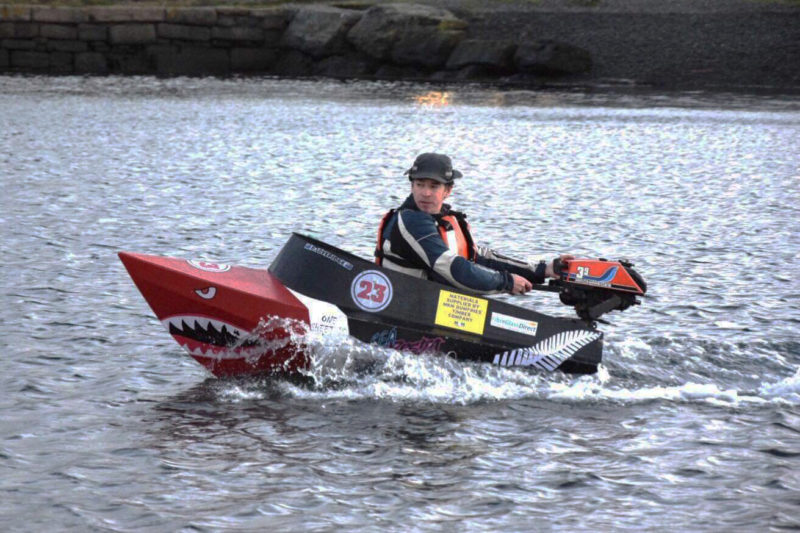 Courtesy of Dan Loveridge
Courtesy of Dan LoveridgeThe half-century-old outboard wasn’t what it once was and didn’t give Dan the win. On the bright side, he couldn’t go so fast that he would need to wear his helmet.
As the challenge rules did not permit pre-race trials, SEA BESTIA was launched on Christmas Day in front of both his fellow contestants and a crowd of excited onlookers. The day was calm, and Dan was pleased that SEA BESTIA sat well in the water, but when he climbed aboard he was dismayed that, despite the findings in the water-trough trials, she was extremely tender. He had built a fore-and-aft bench amidships so that he could adjust the trim while underway, but to start the vintage outboard he had to face the stern. The engine had no neutral and once it was fired up, SEA BESTIA was underway and to see forward, Dan had to turn around while dealing with the instability and the obstacle of the seat.
Eventually, once he had managed the maneuver, Dan moved forward a little, cranked on the throttle and SEA BESTIA took off. “She was quickly at speed and stable as a rock!” But then the outboard died. Dan restarted it and it ran for a few minutes but died again. He never got a chance to fully open the throttle or run long enough to see how she handled at speed.
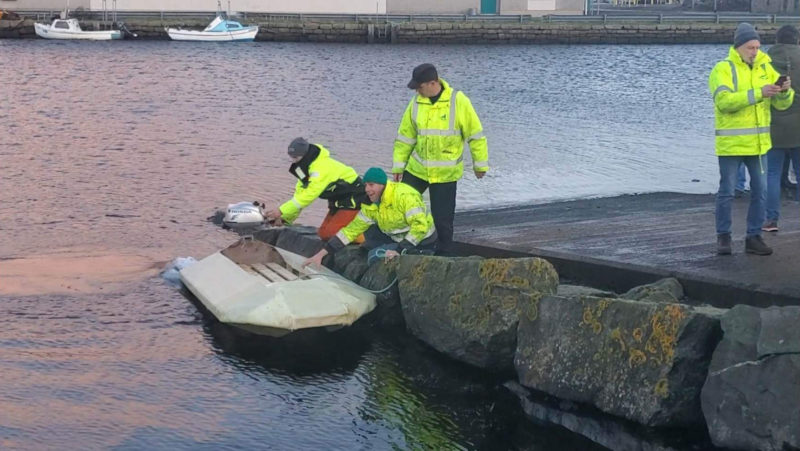 Courtesy of Dan Loveridge
Courtesy of Dan LoveridgeJacques built his boat with a single sheet of plywood, as required by the rules. His creation incorporated twin hulls formed with plywood frames and bedsheets stiffened with fiberglass cloth and soaked in resin. Expanding foam in the bows gave extra strength and flotation. It may not have looked beautiful but it stayed afloat and won the day.
And Dan wasn’t alone in his troubles. Jacques and Juan were also coming to grips with their newly launched vessels. Dan recalls: “Jacques had built a marvelous device. He’d used his sheet of plywood to make frames for a catamaran. Then he took some bedsheets, covered them in fiberglass and resin, and made the hull panels. He sealed the bow with a liberal use of expanding foam and hospital corners. It looked horrific, but with a borrowed Honda 2.3-hp outboard, it performed flawlessly, slow and stable…the winning formula.
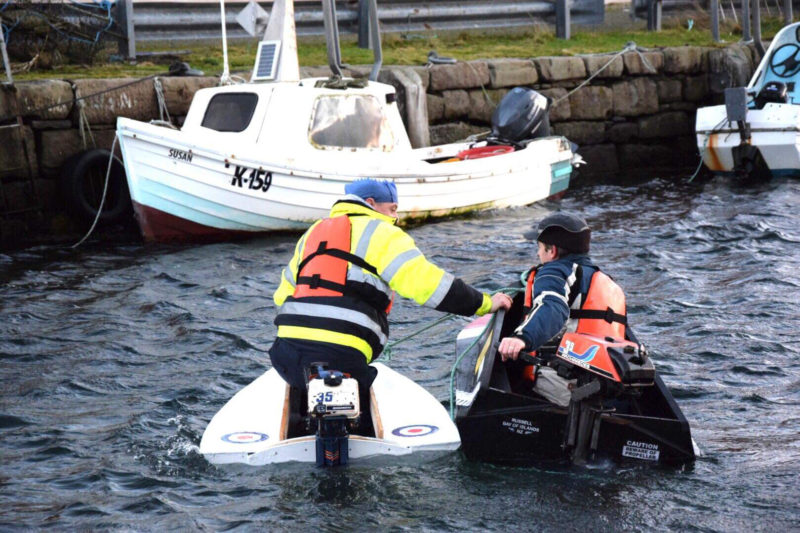 Courtesy of Dan Loveridge
Courtesy of Dan LoveridgeHaving rammed Juan, Dan did his best to get him to shore. When his own engine died, the two boats drifted the rest of the way to the dockside. Coincidentally, while Dan had decorated SEA BESTIA with an image from an American WWII plane, Juan had adorned his boat with the WWII-era RAF Type A roundel.
“Juan had decided to copy AVANTI, but it was a rough copy and initially quite unstable. We added sponsons to try to make it safe. We all predicted it would sink, which it did, albeit not on its own: I accidentally rammed it and towed it backward until it partially sank. It wasn’t entirely my fault, as it happened when I was turning around after starting the engine and I veered off course and straight into Juan. He couldn’t get out of the way because he’d hit a rock, sheared off his propeller, and was dead in the water. Then my engine died, and we drifted away as he slowly sank. We made it to the far side of the harbor where Jacques rescued me and towed SEA BESTIA back to the onshore support crew for engine repairs. Juan scrambled out onto a fishing boat, and the crew helped him drag his boat up onto the dock and into retirement. I did get out again, but the outboard kept breaking down and I was finally towed in and quit.
 Courtesy of Dan Loveridge
Courtesy of Dan LoveridgeJuan, decked out for Christmas in a festive paper crown, clings to the line that is keeping his boat from sinking. Moments later, the support crew would help pull the stricken vessel up onto the hard, but its racing days were over.
“So, Jacques won the day: He had produced the only fully working package, although I think he should have been disqualified because his outboard was definitely not a £50 model. But then, Juan and I had both used more than one sheet of plywood, so perhaps the best man won. It was a great day, farcical but immensely fun.”
Next year, the crew will be out on the water again, and 2024 entries will be shop-bought or home-made radio-controlled boats with a budget of £50.![]()
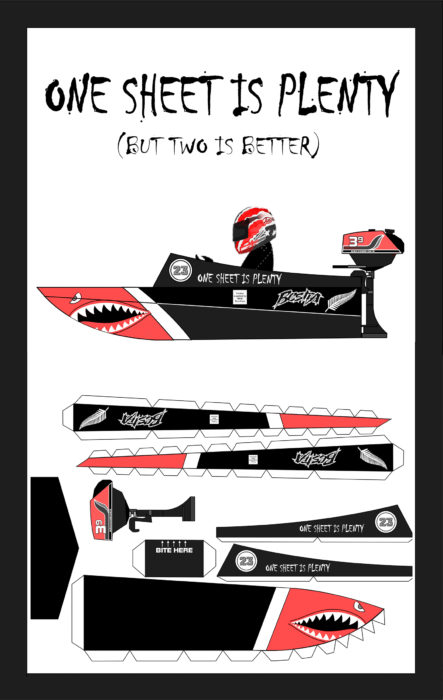 Dan Loveridge
Dan LoveridgeClick on the picture above for Dan’s plans for a paper model of SEA BESTIA that can be printed, cut out, and assembled.
Do you have a boat with an interesting story? Please email us. We’d like to hear about it and share it with other Small Boats Magazine readers.
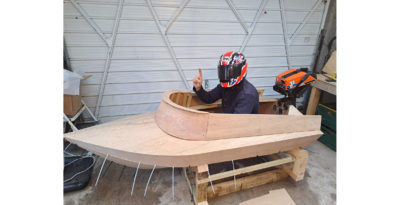
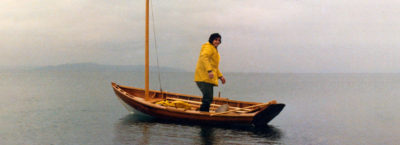

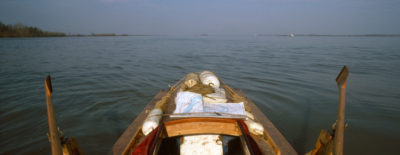


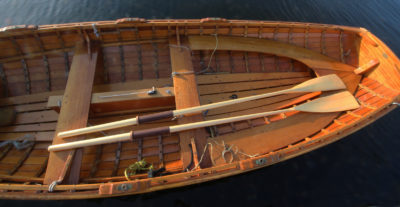

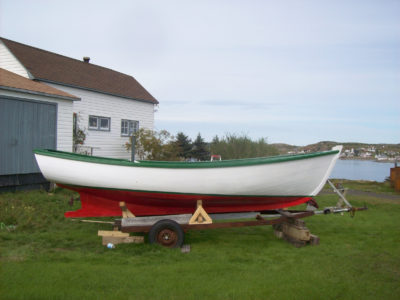


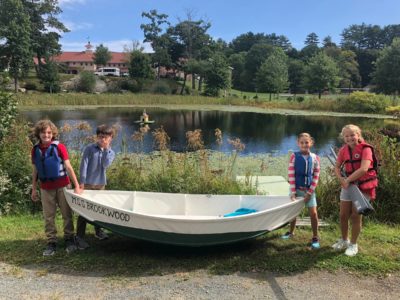
Just love it. They sure look like they are having a blast!!!
Frank, it was great fun and really made our Christmas Day.
It was good to see everyone onboard interested in the whole process as the idea formed until 4 months later as Juan’s boat slipped beneath the waves!
Fabulous story, you guys seem like exactly the type of people I’d love to hang out with! Way to bring the creative fun!
Thanks Jeremy 🙂
My workshop is always open if you ever find your way to Scotland.
R/C boats for 2023 Christmas is the current plan. I’m trying to figure out how to get a petrol strimmer motor into a 3′ to 4′ hydroplane, and make it spit flames out the exhaust when you blip the throttle.
Was thinking of asking monster energy if they would loan me a monster truck, merchandise tent and some brolly dollies for a bit of showmanship. Obviously will need a killer paint job on the model as well….
SEABEASTIA has found a new home up in Inverness. Hopefully she will be out on Loch Ness in the near future with her new owner, Connor.
Sad to see her go, but that leaves a boat-sized hole in my projects list – time to start scouring Small Boats articles to see what catches my eye!